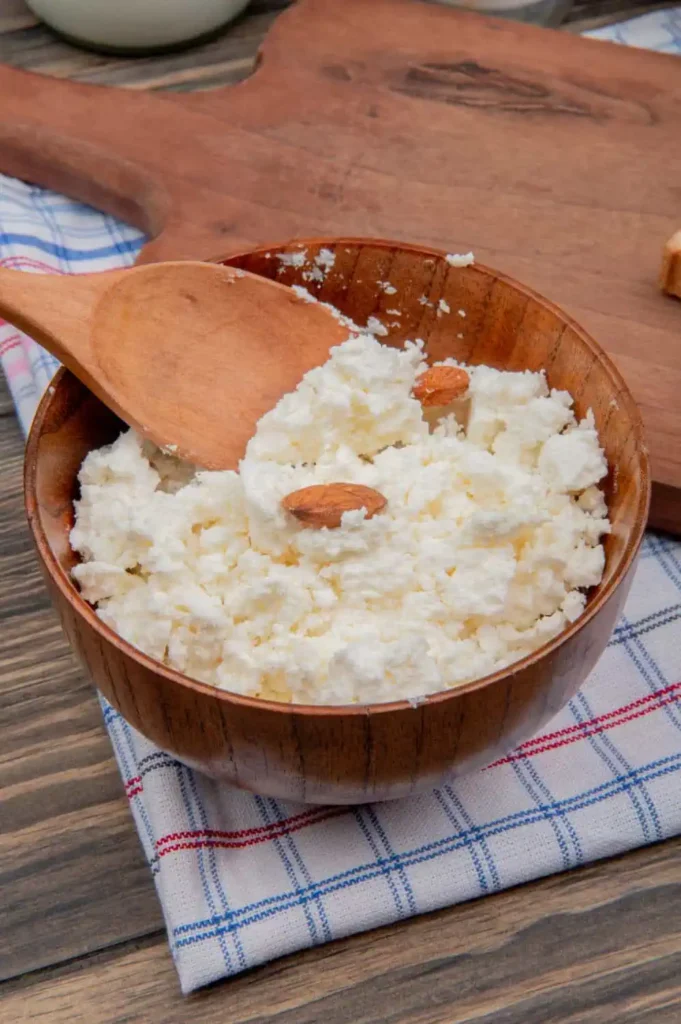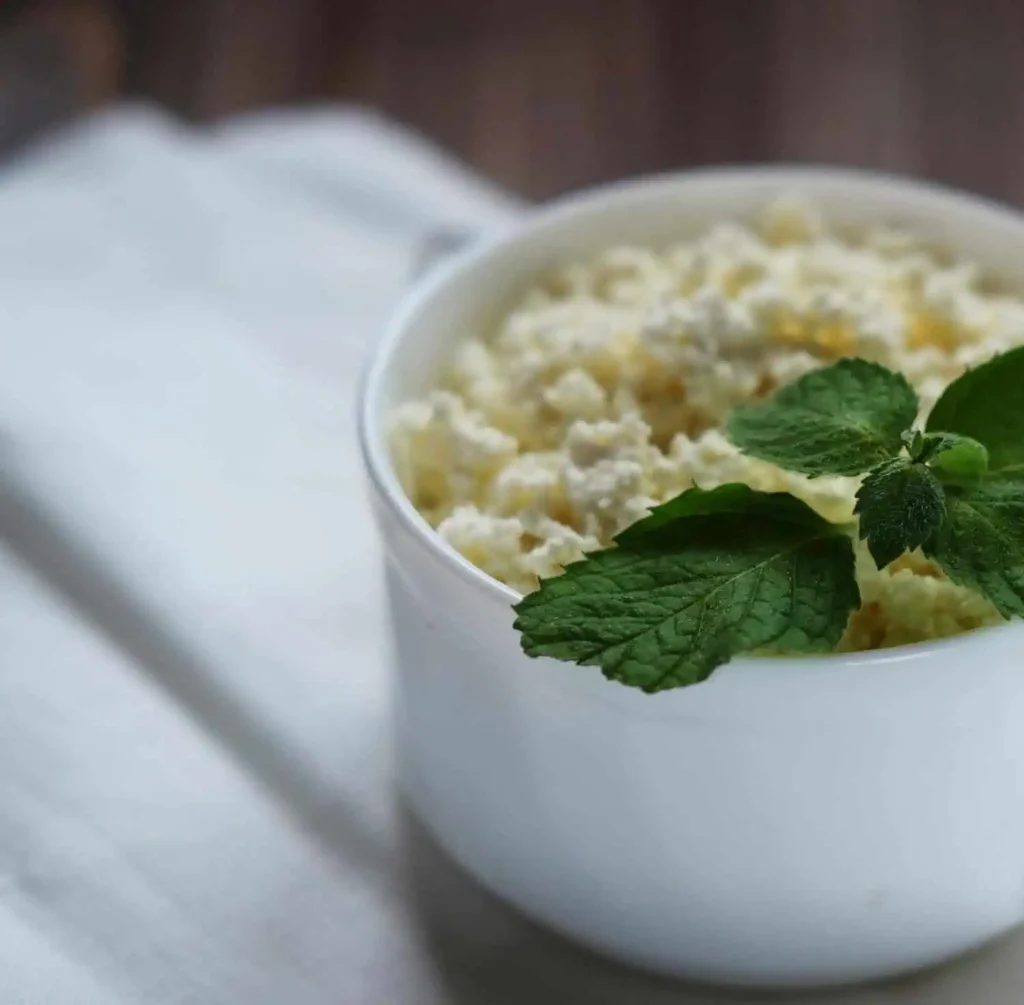If you’re looking to add some extra richness and nutritional value to your favorite dishes, you might have wondered: Will cottage cheese melt in a sauce? From pasta bakes to creamy dips, cottage cheese is a popular choice for many home cooks thanks to its protein content and unique flavor. However, whether it will melt smoothly—or at all—when heated is a common point of confusion. In this article, we’ll dive deep into every aspect of using cottage cheese in sauces. You’ll learn how it behaves, how to use it effectively in various recipes, and how you can avoid clumps when you want a smooth sauce. Get ready for a comprehensive guide that answers all your questions!
What Is Cottage Cheese?
To address the question “Will cottage cheese melt in a sauce?”, it helps to understand what cottage cheese actually is. Cottage cheese is a fresh cheese known for its small curds, light taste, and high protein content. It’s made by taking pasteurized cow’s milk and adding an acidifying agent or rennet, which causes the milk to separate into curds (the solids) and whey (the liquid). The curds are then drained—sometimes rinsed—to create the soft, creamy cheese you find in grocery stores.
Key Characteristics of Cottage Cheese
- Mild Flavor: Cottage cheese has a subtle, tangy taste.
- High Protein: Compared to many other cheeses, cottage cheese is packed with protein.
- Low Fat (If You Choose Low-Fat Varieties): Skim or low-fat varieties offer a lighter option than many aged cheeses.
- Soft Texture: It often looks a bit lumpy due to its curds, which vary in size depending on the brand or type.
Because it’s not aged and has a high moisture content, cottage cheese behaves differently than harder, aged cheeses like cheddar or mozzarella, especially when heat is applied.
Why Cottage Cheese Doesn’t Melt Like Other Cheeses
Will cottage cheese melt in a sauce? The short answer is that it does not melt in the traditional sense like cheddar, mozzarella, or Gouda would. There are two main reasons:
- High Moisture Content: Cottage cheese contains a lot of water. When you try to heat or “melt” it, the water within the curds warms up, and the curds themselves can start to separate, leading to a grainy or curdled texture instead of a smooth melt.
- Lack of Aged Protein Structure: The proteins in aged cheeses bind together smoothly when heated. In contrast, cottage cheese proteins have not gone through an aging process, which would develop a matrix that melts well.
Because of this, cottage cheese behaves very differently from aged cheeses in hot dishes. However, while it may not melt, it can still be used to add creaminess if prepared correctly.
The Science Behind Cheese Melting
Before explaining further, let’s look at the melting science. When heated, most cheeses undergo a transformation: solid fats liquefy, and the dense protein network relaxes into stretchy or gooey strings (like mozzarella) or a velvety pool (like cheddar).
- Aged Cheeses: They have a protein matrix that melts smoothly once enough heat is applied.
- High-Fat Cheeses: These cheeses usually melt better because their fat content helps break down curds.
- Emulsifiers: Some cheeses or cheese blends include emulsifiers that help water and fat coalesce for a slick, consistent melt.
In the case of cottage cheese, there aren’t enough fats and the right protein structure available to create that beautiful, stringy melt. Instead, the curds can separate, causing a lumpy or clumpy appearance unless specific techniques are used to smooth things out.
Will Cottage Cheese Melt in a Sauce? Detailed Explanation
So, the critical question remains: Will cottage cheese melt in a sauce? If you define melting as creating a velvety, uniform cheese sauce, then cottage cheese will not melt the way cheeses like cheddar or smoked gouda would. Because it’s a fresh cheese, its curds remain intact. This often leads to lumps in your sauce unless you mix or blend it thoroughly.
However, you can still incorporate it into your recipes in a way that provides a creamy mouthfeel. Rather than melting, cottage cheese gives your dish a soft, smooth element—but only after you employ certain cooking tricks. For instance, pureeing cottage cheese results in a creamy texture that can blend into a sauce more like a thickening agent rather than a classic cheese melt.
Types of Dishes That Use Cottage Cheese in Sauces
Even though cottage cheese does not melt in the traditional sense, there are many dishes that utilize it effectively in sauces and other cooked meals:
- Lasagna: A common practice is to mix cottage cheese with eggs and herbs to form a layer in lasagna. Although it won’t melt, when combined with other cheeses (like mozzarella and Parmesan), it contributes a creamy texture and additional protein.
- Pasta Bakes: Cottage cheese can be stirred into tomato-based sauces or creamy white sauces for baked pasta recipes.
- Casseroles: Many home cooks use cottage cheese in casseroles to add protein, moisture, and a slightly tangy flavor.
- Dips and Spreads: Blending cottage cheese in a food processor with herbs and seasonings can create a smooth, spreadable dip.
In these dishes, the cheese merges with other ingredients, so you don’t necessarily notice that it does not melt in the same fashion as other cheeses.

How to Use Cottage Cheese in Sauces: Tips and Techniques
When you want to add the fresh cheese taste and nutritional value of cottage cheese to your sauces (pasta sauce, vegetable bakes, or even casseroles), you can follow these simple cooking techniques to work around the fact that cottage cheese doesn’t melt:
- Blend or Puree It
- Use a blender or food processor to break down the curds into a smooth paste.
- Once blended, it can resemble ricotta or cream cheese in texture, making it perfect for a creamy sauce.
- Add a bit of milk or cream if needed to reach the desired consistency.
- Combine with Other Cheeses
- If you want a sauce that “melts” more reliably, mix cottage cheese with a melt-friendly cheese like mozzarella or cheddar.
- The cottage cheese adds moisture and tang, while the other cheese provides stretch and melt.
- Use Thickeners or Binders
- Adding a roux (a mixture of flour and fat) or cornstarch slurry can help incorporate the cottage cheese more smoothly into sauces.
- This approach lessens the appearance of grainy lumps.
- Cook on Low to Medium Heat
- Avoid high heat, which may cause the curds to expel whey and become rubbery.
- Stir frequently to evenly distribute heat.
By using these steps, you can maintain a smoother texture in your sauce and still enjoy the benefits of cottage cheese.
Making a Creamy Sauce with Cottage Cheese
Despite the fact that many people ask “Will cottage cheese melt in a sauce?”, you can indeed transform the texture of cottage cheese so that it functions much like a cream sauce. Here’s a basic recipe guideline:
Simple Creamy Cottage Cheese Sauce
Ingredients:
- 1 cup low-fat cottage cheese (or full-fat, if you prefer)
- ¼ cup milk or cream (adjust as needed for consistency)
- 1 tablespoon butter (optional, for a richer flavor)
- 2 tablespoons grated Parmesan cheese (adds saltiness and a bit of melt)
- Salt, pepper, garlic powder, onion powder, or any seasoning blend you like
- Optional: a pinch of cornstarch (if you want a thicker consistency)
Instructions:
- Blend the cottage cheese in a food processor or blender until the texture becomes smooth. Add a touch of milk if needed.
- Melt the butter in a small saucepan over low to medium heat.
- Add the blended cottage cheese carefully while stirring. Slowly incorporate extra milk or cream until you reach your desired sauce consistency.
- Stir in the Parmesan cheese (or another favorite cheese) and season with salt, pepper, garlic powder, or other seasonings.
- Simmer gently for 2–3 minutes to let the flavors marry. Do not boil.
- Taste and adjust seasonings as needed, or add a small slurry of cornstarch if you want the sauce to thicken further.
This creamy sauce is wonderful for drizzling over pasta, vegetables, or even chicken. It’s a great example of how to leverage the fresh, tangy flavor of cottage cheese without expecting it to melt traditionally.
Common Mistakes to Avoid
When cooking with cottage cheese in sauces, there are a few pitfalls that can ruin your dish’s texture or taste:
- Using Very High Heat
- Cottage cheese contains a lot of moisture. Rapid, high heat will cause it to separate or curdle quickly, resulting in a lumpy mess.
- Skipping the Blend
- If you’re aiming for a smooth, creamy sauce and you don’t blend the cottage cheese, its curds will stay intact. That might be undesirable for many sauce recipes.
- Not Using a Thickener
- If you’re adapting a traditional cheese sauce recipe, be aware that cottage cheese behaves differently. Adding cornstarch, flour, or a roux can help keep the sauce cohesive.
- Allowing It to Boil
- Boiling or simmering vigorously introduces more moisture loss and can lead to a grainy texture.
- Choosing the Wrong Cottage Cheese
- Some brands have larger curds or less creaminess. Experiment with different brands or fat levels to find the best cottage cheese for your sauces.
Avoiding these mistakes will help you achieve a delicious final product every time, even if cottage cheese does not melt in the same way as aged cheeses.
Nutritional Benefits of Cottage Cheese
Beyond the burning question “Will cottage cheese melt in a sauce?”, there’s another reason people love cottage cheese: it’s quite healthy. As a fresh cheese, cottage cheese generally has fewer calories and less saturated fat than many of its aged counterparts. Here are a few nutritional highlights:
- High Protein: A half-cup serving of cottage cheese can contain up to 15 grams of protein (depending on the brand).
- Low Carb: Cottage cheese typically has a lower carbohydrate count compared to items like yogurt or milk, making it appealing for certain diets.
- Vitamins and Minerals: It contains calcium (good for bones), B vitamins (supports energy levels), and phosphorus (important for cellular function).
- Weight Management: Due to its protein content and lower fat options, cottage cheese can be helpful for a balanced diet.
Thus, including cottage cheese in your sauces is a nutritious way to boost protein content without adding excessive fat.

FAQs:
1. Will cottage cheese melt in the microwave?
Answer: Cottage cheese does not melt in the traditional sense, whether on the stove or in the microwave. Its curds may soften a bit with heating, but you’ll notice a grainy texture rather than the smooth, melty quality you’d see with cheddar. If you want cottage cheese to become creamy, blend it before heating.
2. How do I keep cottage cheese from curdling in a sauce?
Answer: You can minimize curdling by cooking on low to medium heat and stirring frequently. Blending the cottage cheese first, then adding a thickener like cornstarch, also helps create a more even texture. Avoid boiling the mixture, as this can lead to further separation.
3. Can cottage cheese be used instead of ricotta in pasta sauces?
Answer: Absolutely. Although cottage cheese has a lumpier texture, once blended, it can stand in for ricotta in many pasta recipes. You may need to adjust seasoning and moisture levels, but it works well in lasagna, baked ziti, or stuffed shells.
4. What if I want an actual melty cheese effect in my sauce?
Answer: Pair your cottage cheese with a more melt-friendly cheese such as mozzarella, cheddar, or Gruyère. This way, you get the tangy, creamy benefit of cottage cheese along with the gooey, stringy melt of a more traditional cheese.
5. Is it safe to blend hot cottage cheese?
Answer: It’s generally best to blend cottage cheese when it’s at least near room temperature or cool to prevent safety issues and lumps. If you’re blending it hot, make sure to use a blender that is safe for hot liquids (like a high-quality immersion blender or a secure countertop blender with a vent for steam).
Final Thoughts
Will cottage cheese melt in a sauce? No, it won’t melt in the way traditional cheeses do. Instead, it holds onto its curds, which is why you can end up with a noticeably grainy or lumpy texture if you simply mix it into a hot sauce. Nevertheless, you can still create a smooth, creamy sauce from cottage cheese by blending it, adding thickeners, and combining it with other melt-friendly cheeses. This approach gives you the best of both worlds: a tasty dish that remains full of fresh cheese flavor and protein without losing out on the creaminess you crave.
Moreover, incorporating cottage cheese into your dishes provides excellent nutritional benefits. Its high protein content, lower fat (in certain varieties), and range of vitamins make it a standout choice. Whether you’re making pasta, dips, casseroles, or sauces, cottage cheese can handle a wide variety of cooking situations—just with a few methods to help it blend in seamlessly.
All in all, while cottage cheese does not melt like cheddar or mozzarella, it’s a fantastic addition to many recipes, particularly for health-conscious cooks who enjoy a lighter alternative. The key is understanding its properties and using techniques that maximize its creaminess. Now that you know the answers, feel free to experiment with adding cottage cheese to your next sauce. You might find that this versatile cheese offers possibilities you never expected—no traditional “melt” required.
Key Takeaways
- Will cottage cheese melt in a sauce? It does not melt in the conventional sense.
- To achieve a creamy texture, blend the cottage cheese and cook on low to medium heat.
- Mixing cottage cheese with melt-friendly cheeses can help if you want a more typical “melting” effect.
- Nutritionally, cottage cheese offers high protein, fewer calories (in some varieties), and essential vitamins and minerals.
- Avoid high heat and boiling, and consider using a thickener to create a smooth sauce that integrates cottage cheese seamlessly.
By following these guidelines, you can confidently use cottage cheese in your cooking—knowing exactly what to expect and how to handle its unique properties. Enjoy experimenting with fresh flavors and nutritious additions to your everyday meals!

